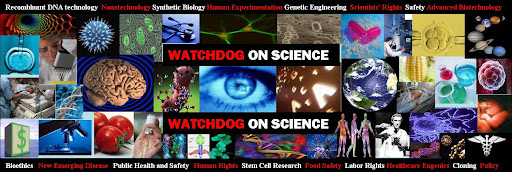
Money and Influence
"We live by the Golden Rule. Those who have the gold make the rules." B. Bavasi
The following is from
Freshlife Inc. July 2, 2009, Issue 128, volume 10
- do you wonder how it’s possible for ideas that are opposed by a vast majority of Americans to become the law of the land – or at least the policy of the federal government? What ever happened to democracy, and how did we become a “corporatocracy”. It’s simple, really - money talks.
These are the amounts spent by the corporations listed. However, most of these corporations also contract out to private lobbying firms, so the amounts you see here are probably NOT the total amounts spent on lobbying in Q1-2009. For example, Monsanto spent $2,094,000 for its in house lobbying but then contracted out to Arent Fox LLP; Lesher, Russell & Barron, Inc. ($60,000); Ogilvy Government Relations ($60,000); Parven Pomper Strategies ($40,000); Sidley Austin LLP; TCH Group, LLC ($50,000); The Nickles Group, LLC ($63,000); The Washington Tax Group, LLC ($40,000); and Troutman Sanders Public Affairs Group ($30,000) - for a total of $2,437,000 in first quarter 2009. That’s right – nearly 2 million dollars in 3 months spent convincing our legislators that GMOs (and other Monsanto profit-making ideas) are a good idea.
Numbered by most dollars spent and separated by category – this is the money that poured into Washington during January, February and March of this year. (2009)
Health Care, Health Insurance, & Pharmaceuticals3.
Pharmaceutical Research and Manufacturers of America: $6,910,0006. Pfizer, Inc: $6,140,00012. American Medical Association: $4,240,00018. American Hospital Association: $3,580,00019. Eli Lilly and Company: $3,440,00037. America's Health Insurance Plans, Inc: $2,030,00039. CVS Caremark Inc: $2,005,00047. Blue Cross and Blue Shield Association: $1,800,00049. GlaxoSmithKline: $1,780,00063. Merck & Co: $1,500,00065. United Health Group, Inc: $1,500,00069. Sanofi-Aventis U.S. Inc: $1,460,00076. Novartis: $1,347,13487. Abbott Laboratories: $1,260,00089. Astrazeneca Pharmaceuticals, LP: $1,250,00092. Medtronic, Inc: $1,238,000
Oil2.
Exxon Mobil: $9,320,0004. Chevron U.S.A. Inc: $6,800,0007. Conoco Phillips: $5,980,93516. BP America, Inc: $3,610,00020. Marathon Oil Corporation: $3,380,00045. American Petroleum Institute: $1,810,000
Defense5.
Lockheed Martin Corporation: $6,380,00011. General Electric Company: $4,540,00028. Northrop Grumman Corporation: $2,570,00030. Boeing Company: $2,410,0051. Honeywell International: $1,760,00073. Raytheon Company: $1,360,000
Telecoms10.
AT&T Services, Inc: $5,134,87314. Verizon (excluding Verizon Wireless): $3,760,00021. National Cable and Telecommunications Association: $3,370,00023. Comcast Corporation: $2,760,00068. Motorola, Inc: $1,470,000
Automotive22.
General Motors: $2,800,00027. United Services Automobile Association: $2,590,24452. Ford Motor Company: $1,750,00084. Toyota Motor North America: $1,290,00086. Alliance of Automobile Manufacturers: $1,264,400
Financial32.
Financial Services Roundtable: $2,260,00033. Prudential Financial, Inc: $2,180,00041. American Bankers Association: $1,890,00061. Visa, Inc: $1,540,00074. Investment Company Institute: $1,359,91775. Securities Industry and Financial Markets Association: $1,350,00082. J.P. Morgan Chase Bank, N.A.: $1,310,00090. Citigroup Management Corp: $1,250,00090. Credit Union National Association: $1,250,000
Biotech36.
Monsanto: $2,094,00040. Biotechnology Industry Organization (BIO): $1,920,00044. Bayer Corporation: $1,843,672
Railroads24.
Association of American Railroads: $2,759,54554. Union Pacific Corporation: $1,717,10871. BNSF Railway: $1,400,000
Life Insurance42.
American Council of Life Insurers: $1,867,07544. New York Life Insurance Company: $1,840,00064. State Farm Insurance: $1,500,00093. The Northwestern Mutual Life Insurance Company: $1,237,000
Other1.
Chamber of Commerce of the U.S.A.: $9,996,0008. National Association of Realtors: $5,727,0009. U.S. Chamber Institute for Legal Reform: $5,480,00013. AARP: $4,090,00015. Southern Company: $3,650,00017. Altria Client Services Inc: $3,580,00025. Amgen, Inc: $2,750,00026. National Association of Broadcasters: $2,600,00029. Edison Electric Institute: $2,550,00031. Fedex Corporation: $2,370,00034. Textron, Inc.: $2,140,00035. General Dynamics Corp: $2,101,94538. International Business Machines (IBM): $2,030,00043. United Technologies Corporation: $1,860,00046. Recording Industry Association of America: $1,810,00048. CTIA-The Wireless Association: $1,790,00050. Time Warner Inc. $1,780,00053. The Dow Chemical Company: $1,735,00055. American Electric Power Company: $1,716,91356. Microsoft Corporation: $1,650,00057. Qualcomm, Incorporated: $1,620,00058. Wal-Mart Stores, Inc: $1,600,00059. L-3 Communications: $1,580,00060. Exelon Business Services, LLC: $1,540,00062. Johnson & Johnson Services, Inc: $1,530,00066. Norfolk Southern Corporation: $1,485,02667. Koch Companies Public Sector LLC: $1,480,00070. American Airlines: $1,450,00072. Oracle Corporation: $1,390,00077. Air Transport Association of America, Inc.: $1,340,00078. Disney Worldwide Services, Inc.: $1,330,00079. Sepracor, Inc: $1,324,15780. National Association of Home Builders: $1,320,00081. UPS: $1,316,42683. Siemens Corporation: $1,300,00085. Duke Energy Corporation: $1,282,77094. Distilled Spirits Council of the U.S., Inc: $1,230,00095. Business Roundtable: $1,220,00096. Wellpoint, Inc: $1,220,00097. American Wind Energy Association: $1,212,50498. F. Hoffmann-La Roche Ltd: $1,206,42799. National Rural Electric Cooperative Association: $1,200,00099. CBS Corporation: $1,200,000
 Someone once said...yes...we live by the Golden Rule...."those with the gold, make the rules." Unfortunately, this is the case with Pfizer, the largest and wealthiest pharmaceuitical company in the world. In a story from the Washington Post, ten Pfizer executives and scientists avoid criminal charges for allegations of murdering African children by offering a "Pfizer Pot of Gold".
Someone once said...yes...we live by the Golden Rule...."those with the gold, make the rules." Unfortunately, this is the case with Pfizer, the largest and wealthiest pharmaceuitical company in the world. In a story from the Washington Post, ten Pfizer executives and scientists avoid criminal charges for allegations of murdering African children by offering a "Pfizer Pot of Gold".













.jpg)
